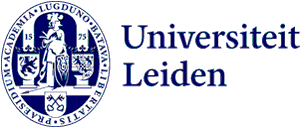99 search results for “isotopic” in the Public website
-
Climate Change and Natural Isotopes
This project, under the supervision of Prof. Dr. Hans van der Plicht, comprises several studies aimed at the use of isotopes occurring naturally in organic material as tracers for both the climate change and its cultural impact at about 6200 BC. The research will be carried out by the co-applicant at…
-
Analysis of 13C and 15N isotopes from Eurasian Quaternary fossils
Insights in diet, climate and ecology
-
PastPorts: tracking migrant origins with an integrated isotopic approach
How can wide-scale applications of isotope analyses and isotope mapping contribute to the identification of ancient migrants and their origins in the Western Caribbean? Can we observe linkages between individual behaviors and long-term patterns, for example as manifested in continuous waves of migration?…
-
Isotopes and the characterization of extrasolar planets
Diverse types of exoplanets such as gas giants on close-in orbits (hot Jupiters) and young massive giants on wide orbits (super Jupiters), with no analogs in the Solar System, pose challenges but also opportunities to our understanding of planet formation and evolution.
-
A multi-isotopic investigation of late medieval Koudekerke
The aim of this project is to gain a better understanding of daily life, diet, mobility and health in late medieval Zeeland, as well as to test the potential of multi-isotopic analyses on a Dutch assemblage.
-
Living in an emporium: An isotopic investigation of diet and mobility in early medieval Dorestad (Netherlands)
The aim of the project is two-fold: first, to further scholarly understanding of the human dynamics that shaped the growth of Dorestad in a broader, international context; and second, to test the potential of multi-isotopic analyses on an early medieval Dutch assemblage.
-
Metabolomics assisted with stable-isotope labeling: exploring neuronal metabolism related to Parkinson’s disease
The progressive loss and degeneration of dopaminergic neurons is a major pathological hallmark of Parkinson's disease (PD). The onset and progression of PD can be triggered by multiple risk factors, for instance, genetic mutation, environmental exposure, and aging.
-
The synthesis of chemical tools for studying sphingolipid metabolism
Sphingolipids are important membrane compounds with a variety of functions. In mammalian cells, different enzymes are involved in the metabolism of sphingolipids, but interruption of this metabolism process leads to different diseases.
-
 Tamara Michaelis
Tamara MichaelisFaculty of Archaeology
-
From hunter-gathering to food production
Isotopic insights on human diet from the later stone age to Neolithic in Northwest Africa, Morocco
-
First measurement of isotopes in atmosphere of exoplanet
An international team of astronomers have become the first in the world to detect isotopes in the atmosphere of an exoplanet. It concerns different forms of carbon in the gaseous giant planet TYC 8998-760-1 b. The research will be published in the scientific journal Nature on Thursday.
-
Biogeochemical Biographies
A multiple isotope approach to human-animal dynamics in the Lesser Antilles across the historical divide
-
Indigenous animal management practices on the eve of Columbus' landfall
Isotopic and zooarchaeological investigations in the Dominican Republic and Jamaica
-
Mobility and exchange
Dynamics of material, social and ideological relationships in the pre-Columbian insular Caribbean
-
 Alexander Wilkinson
Alexander WilkinsonFaculty of Archaeology
-
 Lieke Bes
Lieke BesFaculty of Archaeology
-
Patterns of Paleomobility in the Ancient Antilles
Patterns of paleomobility in the Caribbean were studied through an inter-disciplinary approach using a combination of archaeological, osteological, mortuary, and isotopic data.
-
 Jason Laffoon
Jason LaffoonFaculty of Archaeology
-
The (pre)historic distribution and habitat of the elk in the Netherlands
The project aims to explore Eurasian elk's role in the ecosystems of the past and its relationship with humans through analysis of its distribution and habitat in the Netherlands.
-
Nutrition
Radiation can be used to determine the isotope ratio of a skeleton. This provides information about where our ancestors lived and what they consumed. Dr Andrea Waters has developed a revolutionary method that can trace patterns of consumption from tens of thousands of years ago.
-
Linking soil microbial community dynamics to N2O emission after bioenergy residue amendments
Vinasse is a major by-product generated by the sugarcane biofuel industry. It is a source of microbes, nutrients and organic matter and often it is recycled as fertilizer.
-
Bioarchaeology
Bioarchaeology covers the study of all biological remains from archaeological sites.
-
PhD Candidate: Reconstructing Mobility in Late Prehistoric Cyprus (1.0 FTE)
Archaeology, World Archaeology
-
Searching for an explanation for remarkable behaviour of ice on Earth
If you replace the standard hydrogen atoms in ice with a heavier variant, something odd happens. The volume occupied by the molecules increases by 0.1 per cent. Leiden chemist Jörg Meyer and his colleagues have created a theoretical model that describes this behaviour. Their research appeared on the…
-
Tracing human mobility across the Caribbean
What are the patterns and processes of human mobility in the pre-colonial circum-Caribbean as revealed by burial populations and what are the underlying motives and socio-cultural principles on both micro- and macro-scales?
-
Post-doctoral Researcher: Food & Feasting (0.8 fte)
Archaeology, World Archaeology
-
Setup: Low Temperatures
A lot of our research is performed at temperatures close to absolute zero, among other reasons because this increases the sensitivity of the measurements.
-
Laboratory for Human Osteoarchaeology
The Laboratory for Human Osteoarchaeoloy examines human remains and their burial context to address questions about the human past.
-
Leiden in the Caribbean
The research involves the application and combination of archaeological and archaeometrical methodologies. Petrographic analysis and isotopic provenance studies of raw materials and exotics, and the study of the distribution patterns of these materials are used to gain insight into the exchange of goods…
-
 Nathalie Brusgaard
Nathalie BrusgaardFaculty of Archaeology
-
Adaptive responses to environmental changes in Lake Victoria cichlids
Promotor: Prof.dr. M.K. Richardson, Co-Promotor: F. Witte
-
Archaeozoology
Archaeozoology is the study of faunal remains that are recovered at archaeological sites.
-
Abrupt Climate Change and Cultural Transformation in Syria in Late Prehistory (c. 6800-5800 BC)
This abrupt climate change of 8200 years ago (the so-called 8.2k calBP climate event) has received wide attention among natural scientists, also because of today's rapid climate changes and their impact on our own society. The archaeological implications, however, have not been investigated so far.…
-
The skeleton as a source of information
Bones hold a wealth of information about a person’s life, revealing details about where they came from, how old they were when they died and what diseases they may have had. Scientists can use this data to piece together aspects of an individual's life, offering valuable insights that can help address…
-
The skeleton as a source of information
Bones hold a wealth of information about a person’s life, revealing details about where they came from, how old they were when they died and what diseases they may have had. Scientists can use this data to piece together aspects of an individual's life, offering valuable insights that can help address…
-
Rural Riches
The bottom-up development of post-Roman northwestern Europe
-
Carbon atom reactivity with amorphous solid water: H2O-catalyzed formation of H2CO
We report new computational and experimental evidence of an efficient and astrochemically relevant formation route to formaldehyde (H2CO). This simplest carbonylic compound is central to the formation of complex organics in cold interstellar clouds and is generally regarded to be formed by the hydrogenation…
-
Ecological functions and environmental fate of exopolymers of Acidobacteria
Acidobacteria is a widely distributed phylum but their functional roles in ecosystem processes are still largely elusive.
-
Archaeological Sciences
The Department of Archaeological Sciences seeks to achieve the highest standards of excellence in science-driven education and archaeological research across the globe and across all periods.
-
Investigating palaeoclimate variability in the Iberian peninsula during the last glacial period and implications for Neanderthals
The Iberian Peninsula has been central to the discussion as it was considered to be a 'last refuge' for the species at a time when H. sapiens occupation spread throughout Europe. Much speculation has centred around the idea that extreme climate fluctuations during Marine Isotope Stage (MIS) 3 like Heinrich…
-
Withstanding the cold: energy feedback in simulations of galaxies that include a cold interstellar medium
Understanding how galaxies form, interact, and evolve comes largely from comparing theory predictions with observational data. Numerical simulations of galaxies provide the most accurate approach to testing the theory, as they follow the non-linear evolution of gas and dark matter in great detail and…
-
Exploring strange new worlds with high-dispersion spectroscopy
Until the 1990s, the only known planets were those in our Solar System. Three decades later, several thousand exoplanets have been discovered orbiting stars other than the Sun, and substantial efforts have been made to explore these strange new worlds through spectroscopic analyses of their atmosphe…
-
Digital Archaeology. Promises and Impasses.
Analecta Praehistorica Leidensia 51
-
Organisation of settlement space and residence rules among the Taino, the indigenous people of the Caribbean encountered by Columbus
This research combines archaeological, archaeometric and ethnohistorical research to study the organisation of settlement space and residence rules among the Taino Indians during the Late Ceramic Age (AD 1000-1492).
-
Bernd Schneider
Dr. at Max Planck Institute for chemical Ecology, Jena - Germany
-
Human Osteology and Funeral Archaeology
The Laboratory for Human Osteoarchaeology specialises in the macroscopic and microscopic analysis of human remains. We use cutting edge scientific approaches to address archaeological, historical, and anthropological research questions. In addition to paleopathological, histological, and 3D scanning…
-
The heart of oxygenic photosynthesis illuminated
Promotor: H.J.M. de Groot, Co-Promotor: A. Alia
-
Applications of paramagnetic NMR spectroscopy for protein research
The aim of the research presented in this thesis was to develop new methods forchallenging systems in liquid-state NMR using paramagnetic effects generated by thetwo-armed probe CLaNP-5.
-
Schöningen - Archaeozoological Research
The aim of the research project is to get insight in the biostratigraphical age and the palaeoecological setting of the Schöningen sites and hominin behavior and subsistence during the late Lower Palaeolithic.
-
Multidisciplinary studies or the Middle Paleolithic record from Neumark-Nord (Germany)
Band 69 | 2014
